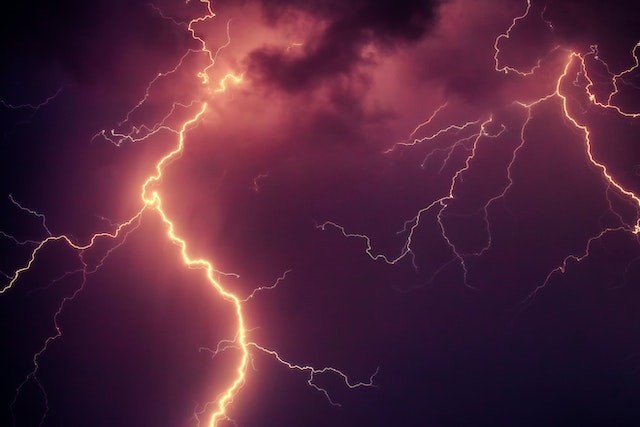
EUMETSAT's Meteosat-12 Satellite Captures Stunning Footage of Lightning Over Europe, Africa, Atlantic Ocean
Europe's first lightning imager released footage featuring lightning over Europe and Africa. European Organisation for the Exploitation of Meteorological Satellites (EUMETSAT) Meteosat-12 satellite is the first to provide such information.
EUMETSAT's Meteosat-12 Satellite Released First Data
The crackle of lightning over Europe, Africa, and the Atlantic Ocean is captured in stunning early videos from new space-borne equipment intended to improve the monitoring of thunderstorms. The photographs were taken from a geostationary orbit 22,000 miles (36,000 kilometers) above the planet's surface, Space.com reported.
As the speed of satellites circling the Earth in this area mirrors Earth's rotation, this altitude is crucial for weather forecasters. As a result, meteorologists can watch as weather phenomena change in real time because the satellites in this orbit always have a clear view of a certain area of the world.
The U.S. The National Oceanic and Atmospheric Administration's (NOAA) satellites have previously used lightning imagers, but Meteosat-12 is the first to give European weather forecasters this kind of data.
The satellite launched in December 2022. It is the first of the new Meteosat Third Generation family of weather monitors for Europe, which will aid meteorologists throughout the continent in forecasting more accurate extreme weather conditions.
The director general of EUMETSAT, Phil Evans, said that dramatic shifts in lightning activity frequently precede severe storms. The data from the Lightning Imager will provide weather forecasters more assurance in their predictions of severe storms by seeing these shifts in movement.
Severe thunderstorms, accompanied by heavy rain, hail, and strong winds, are expected to increase in frequency throughout Europe and the rest of the world as global warming continues. By issuing earlier and more specific warnings, meteorologists seek to safeguard vulnerable populations in affected areas by being able to predict these disasters better.
Where there is the most intense rainfall, frequent lightning is a significant indicator that severe weather occurs, Evans stated in a briefing.
EUMETSAT also shared the stunning footage on Twitter. The animation was reportedly created from the raw preliminary data.
Here are the extraordinary 1st results from #MTGI1's Lightning Imager!⚡️
We can now for the first time detect lightning over Europe & Africa👏
More at: https://t.co/LPubLjF2if
Please note: These animations were created from raw preliminary data and are not for operational use. pic.twitter.com/4QWTwUA1tn— EUMETSAT (@eumetsat) July 3, 2023
ALSO READ: Woman From Ireland Survives Lightning Strike; Doctor Says She's Saved by Her Sneakers
More About EUMETSAT's Lightning Imager And Meteosat Satellites
EUMETSAT operates meteosat-9, -10, and -11 in a geostationary orbit (36,000 km) over Europe, Africa, and the Indian Ocean. Two Meteosat satellites provide quick scan photography over Europe every five minutes and full disc imagery across Europe and Africa every 15 minutes.
Meteorological satellite imagery is essential for nowcasting. It aims to identify fast-evolving high-impact weather and forecast its progression a few hours in advance to protect the safety of life and property.
EUMETSAT's lightning imager (LI) is designed for real-time lightning location and detection for more accurate forecasts of severe thunderstorms.
It has an advantage over ground-based lightning detection networks since it can detect all types of lightning, including intra-cloud, cloud-to-ground, and cloud-to-cloud flashes. The Meteosat LI is a brand-new instrument with nothing to do with the Second Generation series of Meteosats. It uses a detector array without a scanning mechanism.
The lightning imager on the MTG-I satellites will continuously measure at a wavelength of 777.4nm with a very narrow bandwidth, a spatial resolution of 4.5km at a sub-satellite point, and be triggered by optical pulses initiated by lightning emitting energy of greater than between 4 and 7 Jm-2sr-1.
RELATED TOPIC: Survivors Describe What It Feels Like After Being Struck By Lightning
Check out more news info about Lightning Strikes in Science Times.














